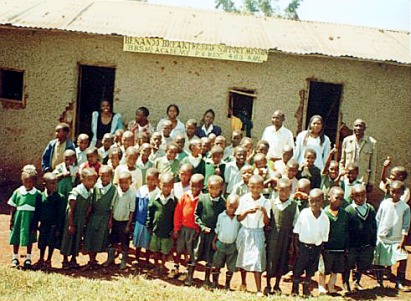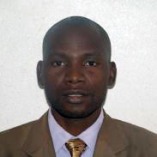
Recently, someone asked me what our children do with their days; what do they do at home or in school; what type of activities do they participate in. I thought I would write about these things.
Our children live either in our CBSM home/school facilities and are fully under our care, or, they live in alternative homes. We try to find alternative homes as much as possible for our children; family life is important for young children. Yet, in some cases the children are subjected to conditions that are not good. We can tell that is the case by changes in their behaviour, and then we move the child back into our home/school compound.
Normal Day Schedule
Wake up around 6 am
Activities
1. Pray
2. Bath
3. Eat breakfast
4. Go to school by 7:40 am
Meals
1. Eat breakfast in the morning
2. Porridge/tea at 10 am (when available)
3. Lunch at 1 pm
4. Tea/porridge at 4 pm (when available)
5. Supper/dinner between 6:30 pm and 7:30 pm
Journey to School
The children who do not live at the CBSM children’s home, and this is the majority of our children, walk various distances to school each day. Some are fortunate and live very close to the school. Some live very far away, approximately five to ten kilometres away.

Recently, someone asked me what our children do with their days; what do they do at home or in school; what type of activities do they participate in. I thought I would write about these things.
Our children live either in our CBSM home/school facilities and are fully under our care, or, they live in alternative homes. We try to find alternative homes as much as possible for our children; family life is important for young children. Yet, in some cases the children are subjected to conditions that are not good. We can tell that is the case by changes in their behaviour, and then we move the child back into our home/school compound.
Normal Day Schedule
Wake up around 6 am
Activities
1. Pray
2. Bath
3. Eat breakfast
4. Go to school by 7:40 am
Meals
1. Eat breakfast in the morning
2. Porridge/tea at 10 am (when available)
3. Lunch at 1 pm
4. Tea/porridge at 4 pm (when available)
5. Supper/dinner between 6:30 pm and 7:30 pm
Journey to School
The children who do not live at the CBSM children’s home, and this is the majority of our children, walk various distances to school each day. Some are fortunate and live very close to the school. Some live very far away, approximately five to ten kilometres away.
Quite often we are asked how children find their way to the Benando Breakthrough Support Mission. There is no typical way. The family and living circumstances of the children vary, but they generally belong to one or more of these categories:
* Children on the street
* Orphans
* Children of imprisoned parents
* Neglected
* Abandoned/abused/heart broken children
* Rescued child labourers
* Child mothers
* Rescued commercial sex workers
* Children of widows or single mothers that cannot care for them
The children are most often brought to use by good Samaritans, neighbours, police, and social services officers. Even though there is no typical way that describes how children find their way toCBSM, there are usual ways. In a later blog post, I will write how formal and informal processes are practised.
For now though, I thought I’d share with you the story of Wanjala*, who came to us last February. Wanjala came to our project on his own. He had fresh wounds on his leg as a result of political skirmishes in Mt Elgon, but fortunately he managed to flee further dangers.
Many of the people were running towards Kimilili to flee the violence, and so, he managed to accompany them. It was a long way to Kimilili, but the people had no choice in where to go because the other side of Mt Elgon has extensive forested areas with wild animals, cliffs and rocks: after which is Uganda.
Wanjala knew nobody when he arrived in Kimilili. A good Samaritan took him to the council of elders in this area. The council of elders gave Wanjala a letter of introduction to our project. Even though he was assured we would take care of him, he was scared.
He was in a lot of pain from his leg injury, unsettled in spirit because of the violence he’d recently escaped, and hungry after the long journey. We took the initiative of taking him to the government hospital, where his wound was dressed. We were also fortunate in being able to identify, at a later point in time, a distant relative of his. We went and talked to him and he accepted Wanjala into his family’s home.
It is now eight months later. Wanjala lives near the CBSM facilities and attends our school. His leg injury has healed and he has settled into life at CBSM. Wanjala is doing well in school; he is studying without problems. He plays football, participates in our drama group, and enjoys singing in our choir. Because of his age, we have also given him responsibilities of a school prefect. He has made friends amongst his schoolmates. More importantly, he is now a member of our BBSM family.
* Name has been changed. Wanjala is common name in this region. It means famine and it is given only to children born during famine/hunger season.
Here is a picture of the children in our lower primary school grades. Some of the children are residents in our CBSM housing. Others are non-residents who stay with guardians, well wishers, amongst other families in our community. It doesn't matter whether they are residents or non-residents of CBSM we are all one family. It is our responsibility to make sure they all feel happy. We believe it is important to show the children how they must look after each other as members of the same family. This is, sometimes, a challenge since they come from various different backgrounds and different tribes. Each day brings trails equally as blessings.







 RSS Feed
RSS Feed